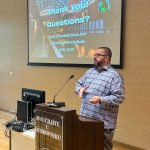Student Shares Experience of Covering Aftermath of Hurricane Ian: “Nothing could have prepared me for the sheer damage we saw.”
By Serra Sowers, Journalism and Sustainability Studies 2024
I have never been more grateful for functioning stoplights and clean, running water.
Three days after Hurricane Ian made landfall in Florida on Sept. 28, 2022, I headed down to southwest Florida with a team of fellow WUFT News reporters to cover the aftermath. A drive that normally takes three and a half hours took five due to flooded roads.
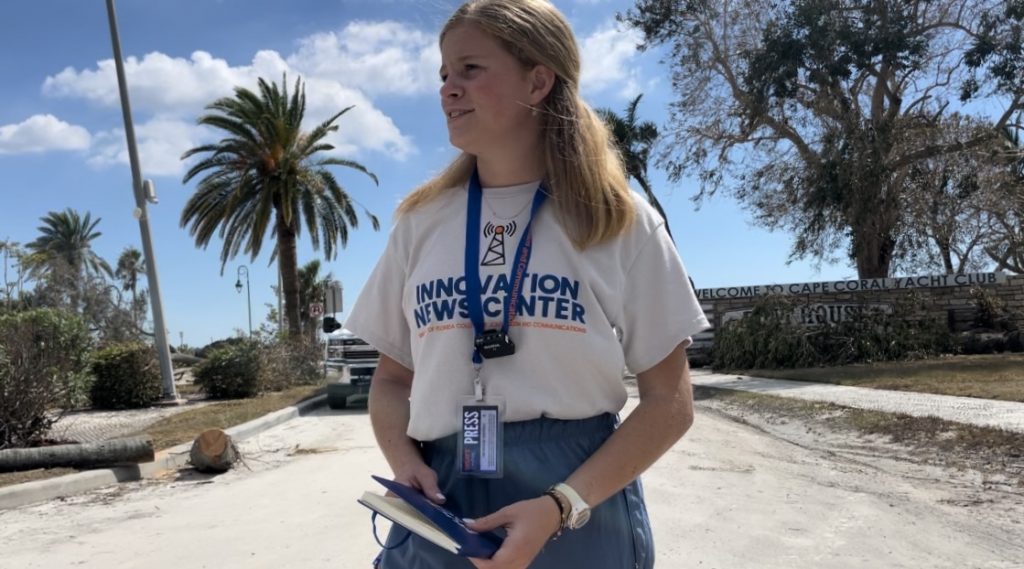
Nothing could have prepared me for the sheer damage we saw. Boats in front yards and roads. Thick mud from the intracoastal waterways sticking to everything inside homes after intruding water receded. Hardly any trees remained. Some residents moved everything they owned onto their driveways in hopes of saving what they could. No residents we spoke with had safe running water or electricity.
Our assignment was to team up with NPR-member station WGCU out of Florida Gulf Coast University in Ft. Myers and provide radio and digital news from surrounding areas. In total, there were 13 UFCJC student reporters covering stories for television and digital in Ft. Myers Beach. I went into Cape Coral with WUFT reporter and Journalism senior Julia Cooper to assess what was happening in the community.
We met first responders from Ohio Task Force 1, the National Guard assisting in water and meals-ready-to-eat distribution, and dozens of residents outside their homes doing whatever they could to clean up the damage. The sun was beating down on the destroyed landscape.
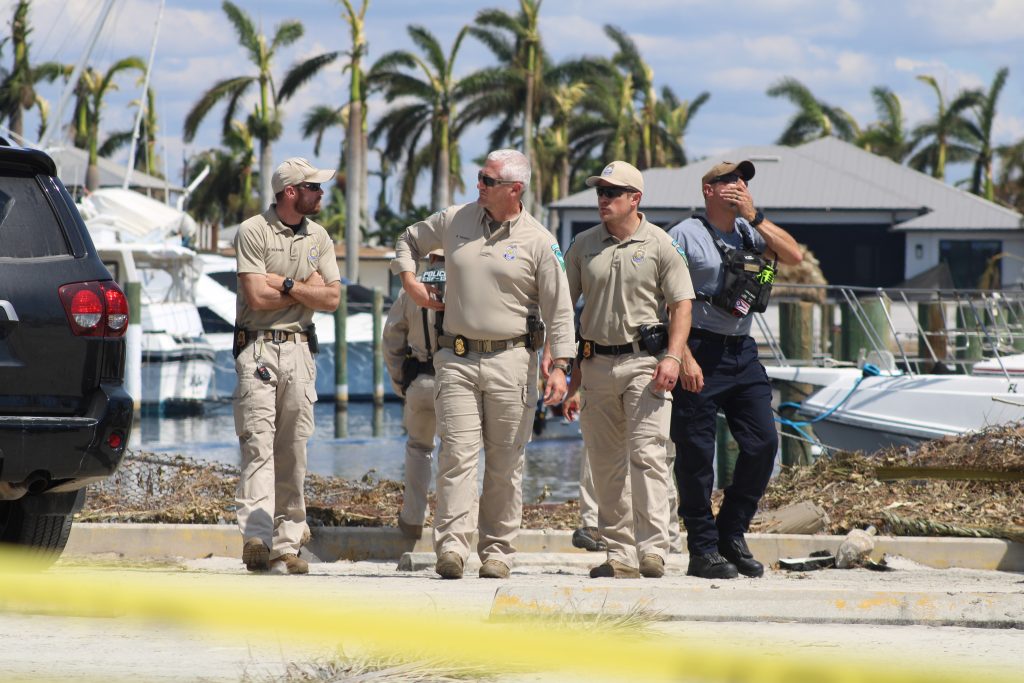
Though extremely tired and emotional, residents we spoke with were resilient and hopeful. Hesitant to interview them and ask them such personal questions, I was grateful that everyone we spoke with was kind. I was there to listen to their stories and honor their emotions as best as we could.
One of the most beautiful moments we witnessed was a woman brought to tears by a collection of food trucks in a Publix parking lot. World Central Kitchen, an international non-profit, was providing hot meals for Ian victims. That day alone, the food trucks gave away 6,000 meals.
Areas we visited were less damaged than drone video we saw out of Ft. Myers Beach, but it was just as devastating. Julia and I kept talking as we drove about what we might have done if we were in their shoes but neither of us could imagine it.
Before visiting Ft. Myers, I didn’t realize how emotional disaster reporting could be. On the way back to WGCU’s station after a full day of reporting, I cried. That day reminded me that our job as journalists is more than getting the story – it’s to empathize with others and stay human.
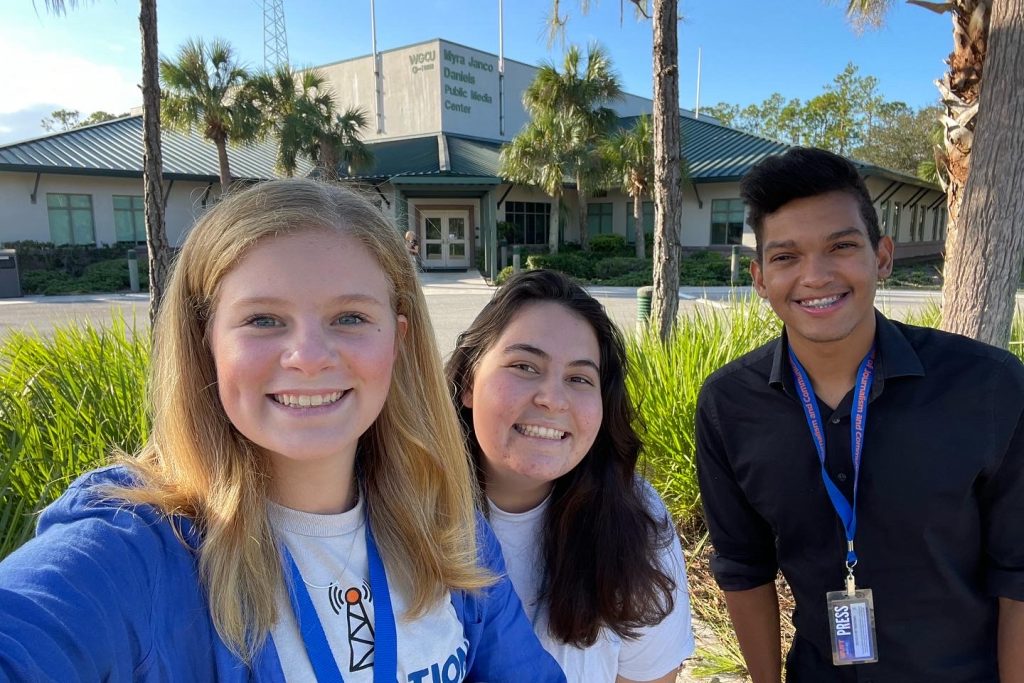
When I first found out we were going to Ft. Myers, my heart stopped. The weight of the assignment was overcome by excitement as we packed the car at 4 a.m. Our managers in the Innovation News Center spoke to us before leaving about how to approach residents and officials, what we might expect to see and what to avoid.
The entire time we were there, I tried to remain compassionate for the storm survivors but knew it was about getting the facts right and keeping a level head. We were making an impact through sharing their stories with other Floridians and nationally.
In the rubble of a disaster in an unfamiliar place, you kind of forget what you learn in the classroom. Instinct kicks in — you apply everything you have ever practiced. You get the details by asking all of the questions that pop into your head. And you learn on the spot how to take notes quickly, collect clear audio and write quickly.
Ian was unpredictable and unprecedented. It washed homes to sea and many in Ft. Myers, Sanibel and Cape Coral were unprepared for the storm’s arrival.
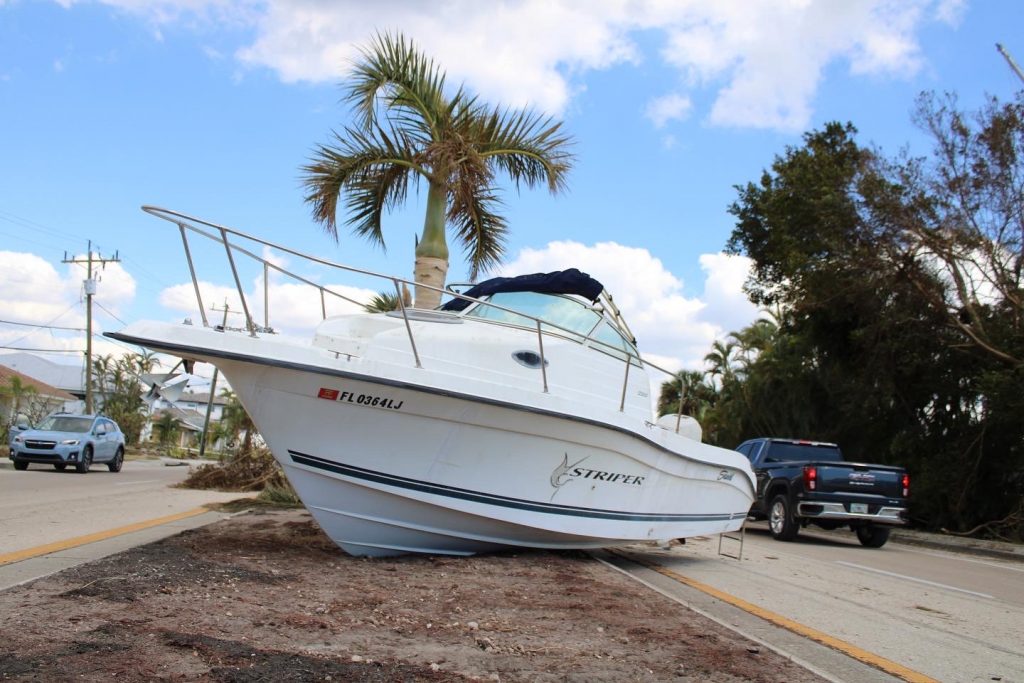
Prepping for a hurricane after living in Florida nearly my entire life is routine. September rolls around and we know to have water stocked, a full tank of gas at all times and sandbags “just in case.”
I grew up in Central Florida and my worst hurricane in recent memory, prior to Hurricane Ian, was Irma. Back in 2017, a tree fell on my childhood home. We lost power for days. Thankfully, everyone I knew was safe. After Ian, southwest Florida residents couldn’t say the same.
Prior to that weekend after the storm, I had only been to southwest Florida once as a child on a family vacation. An old photo memory recently came up on my phone of my younger sister and I standing on the beach in Sanibel.
When speaking to residents, I can only imagine the memories they held in places we drove around, destroyed. Though it was a vacation town for some, it was home for so many more.
On the way back up to Gainesville, I felt grateful for the experience and the storm survivors that were willing to share their stories. At the same time, I felt guilty. We were in the area for less than 48 hours reporting but residents had months of cleaning up to do. The overwhelming sentiment from Cape Coral residents was that they would rebuild their homes, though it would never be the same.
Even a month later, I still feel guilty sometimes. I would like to go back to the area and reconnect with people we spoke to. Though Ian is out of the national news cycle, the effects continue to impact southwest Florida communities, and their stories deserve to be heard.
Participating Students and Faculty
WUFT-FM
Julia Cooper
Reagan Knight
Jake Reyes
Serra Sowers
WUFT-TV
Alexus Cleavenger
Kendall Brandt
Amy Galo
Macie Goldfarb
Ophelie Jacobson
Emily Palazzotto
Christopher Will
Fresh Take Florida
Julia Coin
Jack Prator
Faculty and Staff
Harrison Hove, Journalism lecturer and associate chair
Brandon Meyer, Journalism adjunct and Newsroom Technology Fellow
Heather van Blokland, WUFT-FM/TV Executive Producer and Host
Category: College News, Profiles, Student Profiles
Tagged: Hurricane Ian Serra Sowers WUFT
Subscribe to our News Digest


